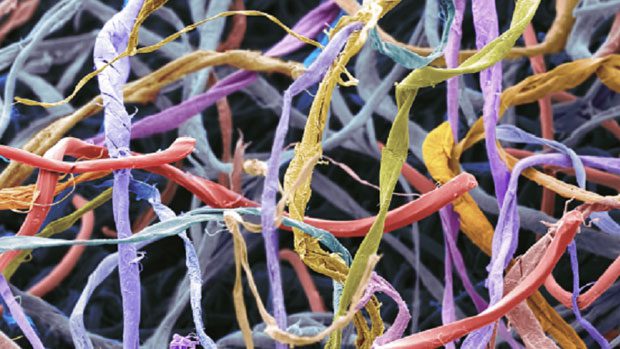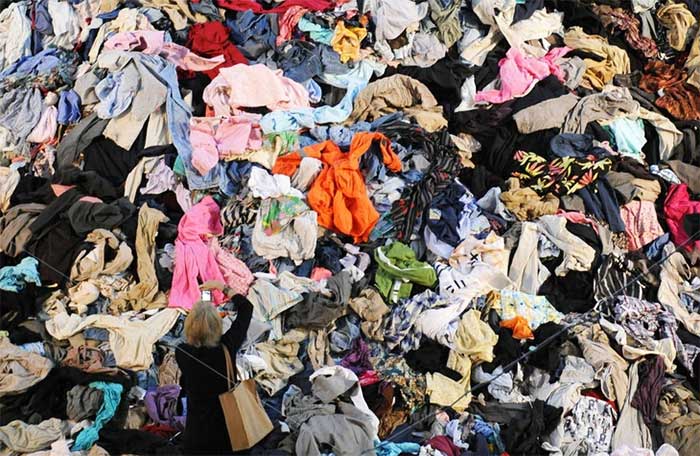Many of us are currently dressed from head to toe in plastic. So, how environmentally harmful is the life cycle of a polyester t-shirt?
According to ABC News, up to 50% of the textile goods in Australia are made from polyester fabric because it is durable, inexpensive, and quick-drying.

It is estimated that over half a million tons of microfibers are released into the oceans worldwide each year just from washing clothes – (Image: XEROS)
Dr. Shadia Moazzem, the lead author of a study from RMIT University in Australia, states that a 100% polyester t-shirt—from its origin as petroleum to its disposal in the trash—results in approximately 20.56 kg of carbon dioxide (CO2) emissions.
The CO2 emissions from producing a single t-shirt are equivalent to driving 140 km. Buying just six t-shirts generates emissions comparable to traveling over 800 km.
Below is the life cycle of a polyester t-shirt, from when it is still fossil fuel to the shirt you wear.
Raw Oil to Plastic Production
Polyester shirts are derived from petroleum, a non-renewable fossil fuel.
This type of petroleum undergoes an industrial production process to be transformed into crystalline plastic pellets known as polyethylene terephthalate (PET). This is also the material used to make plastic bottles.
According to RMIT researchers, producing PET pellets for a single polyester t-shirt requires 7.6 kilowatt-hours of energy and emits 5.95 kg of CO2.
This makes the PET production process one of the most energy-intensive stages in the life cycle of a t-shirt.
To create polyester, the PET pellets are then processed along with other agents, including spinning oil, sodium hydrosulfite, and acetic acid.
Some researchers compare this industrial process to melted plastic flowing through a showerhead.

30 tons of discarded clothing displayed at the Park Avenue Armory in New York City – (Image: AFP).
This spinning process consumes a significant amount of energy. Creating a single t-shirt requires up to 5.32 kWh of energy.
This does not account for other environmental impacts, such as water and chemical use in the dyeing process.
The dyes used in textile production can pollute water sources due to containing toxins and carcinogens, including chromium.
It is perhaps no surprise that the textile industry is recognized as one of the largest polluters in the world.
From Plastic Fabric to Clothing Production
Carbonfact, a technology company that tracks carbon emissions, states that the environmental context of each clothing manufacturing country will result in different carbon emissions.
Data from Carbonfact indicates that a polyester t-shirt produced in Vietnam emits 25% less CO2 than t-shirts made in India, China, and Bangladesh, which are leading countries in the textile industry.
Furthermore, according to Carbonfact data, your polyester t-shirt will emit 120 times more CO2 if it is shipped from China to Australia.
The story does not end here, as the next stage in the life cycle of the t-shirt will be one of the most environmentally destructive, with significant amounts of water and energy used to wash and dry it…
Researchers at RMIT modeled this stage in the life cycle of polyester t-shirts. They estimate that there are 50 washes per year, contributing to nearly one-third of the total carbon emissions of the shirt, equivalent to 6.25 kg of CO2 emissions.
A 2017 study found that one-third of the microplastics released into our oceans and waterways come from synthetic materials.
Dr. Zoe Mellick from the University of Queensland states: “Synthetic fibers like polyester take much longer to degrade. Some studies indicate that it takes 20 to 200 years to decompose.”




















































